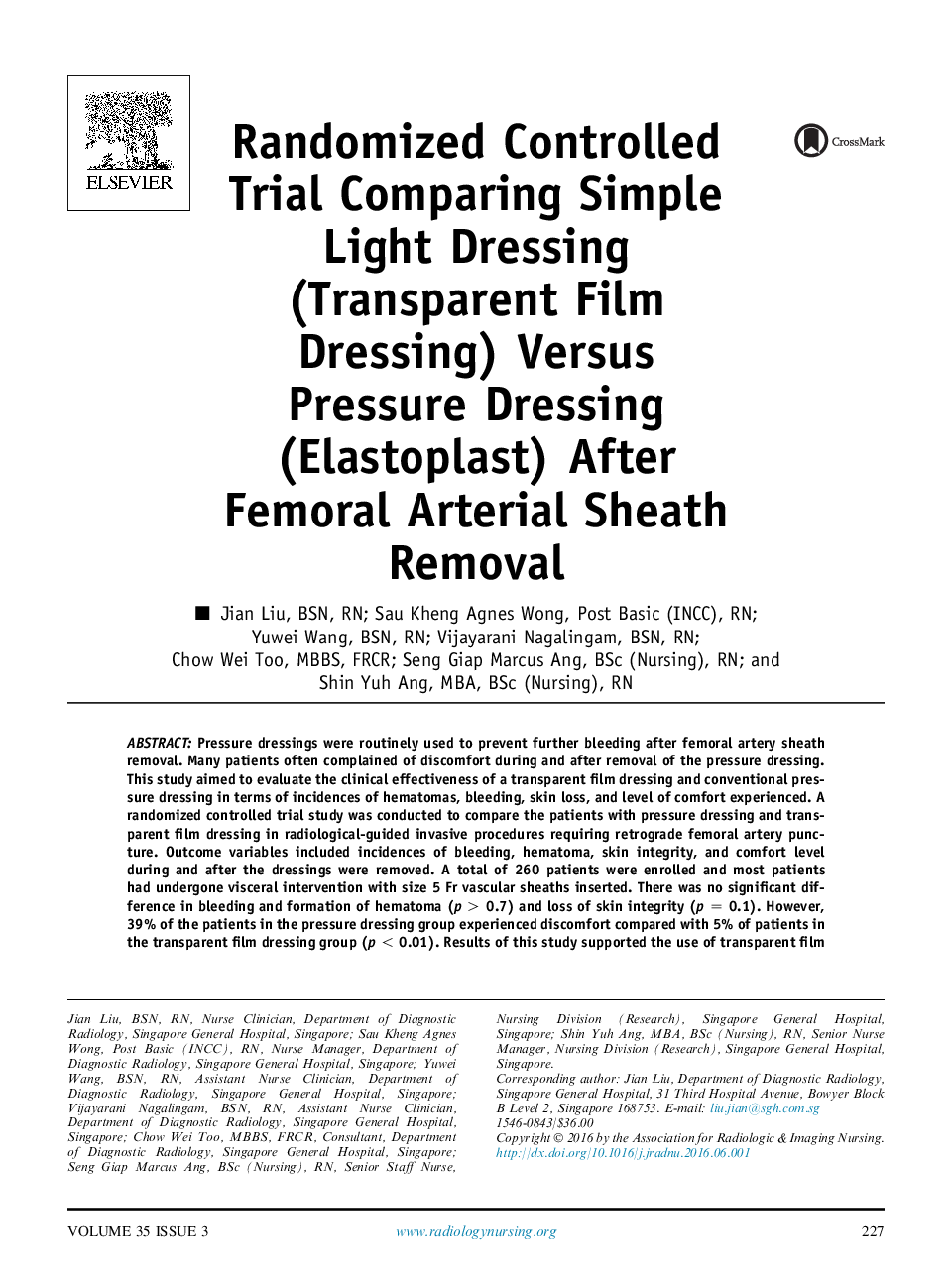| Article ID | Journal | Published Year | Pages | File Type |
|---|---|---|---|---|
| 2673087 | Journal of Radiology Nursing | 2016 | 9 Pages |
•Current evidence supports the use of transparent film dressing.•Use of transparent film dressing does not increase bleeding/hematoma formation.•Use of transparent film dressing provides greater comfort to patients.•More patients complained of mild discomfort with pressure dressing.•No significant difference in loss of skin integrity was noted between both dressings.
Pressure dressings were routinely used to prevent further bleeding after femoral artery sheath removal. Many patients often complained of discomfort during and after removal of the pressure dressing. This study aimed to evaluate the clinical effectiveness of a transparent film dressing and conventional pressure dressing in terms of incidences of hematomas, bleeding, skin loss, and level of comfort experienced. A randomized controlled trial study was conducted to compare the patients with pressure dressing and transparent film dressing in radiological-guided invasive procedures requiring retrograde femoral artery puncture. Outcome variables included incidences of bleeding, hematoma, skin integrity, and comfort level during and after the dressings were removed. A total of 260 patients were enrolled and most patients had undergone visceral intervention with size 5 Fr vascular sheaths inserted. There was no significant difference in bleeding and formation of hematoma (p > 0.7) and loss of skin integrity (p = 0.1). However, 39% of the patients in the pressure dressing group experienced discomfort compared with 5% of patients in the transparent film dressing group (p < 0.01). Results of this study supported the use of transparent film dressing after femoral artery sheath removal. The use of transparent film dressing did not lead to an increase in bleeding or hematoma formation and has provided greater comfort to patients.
